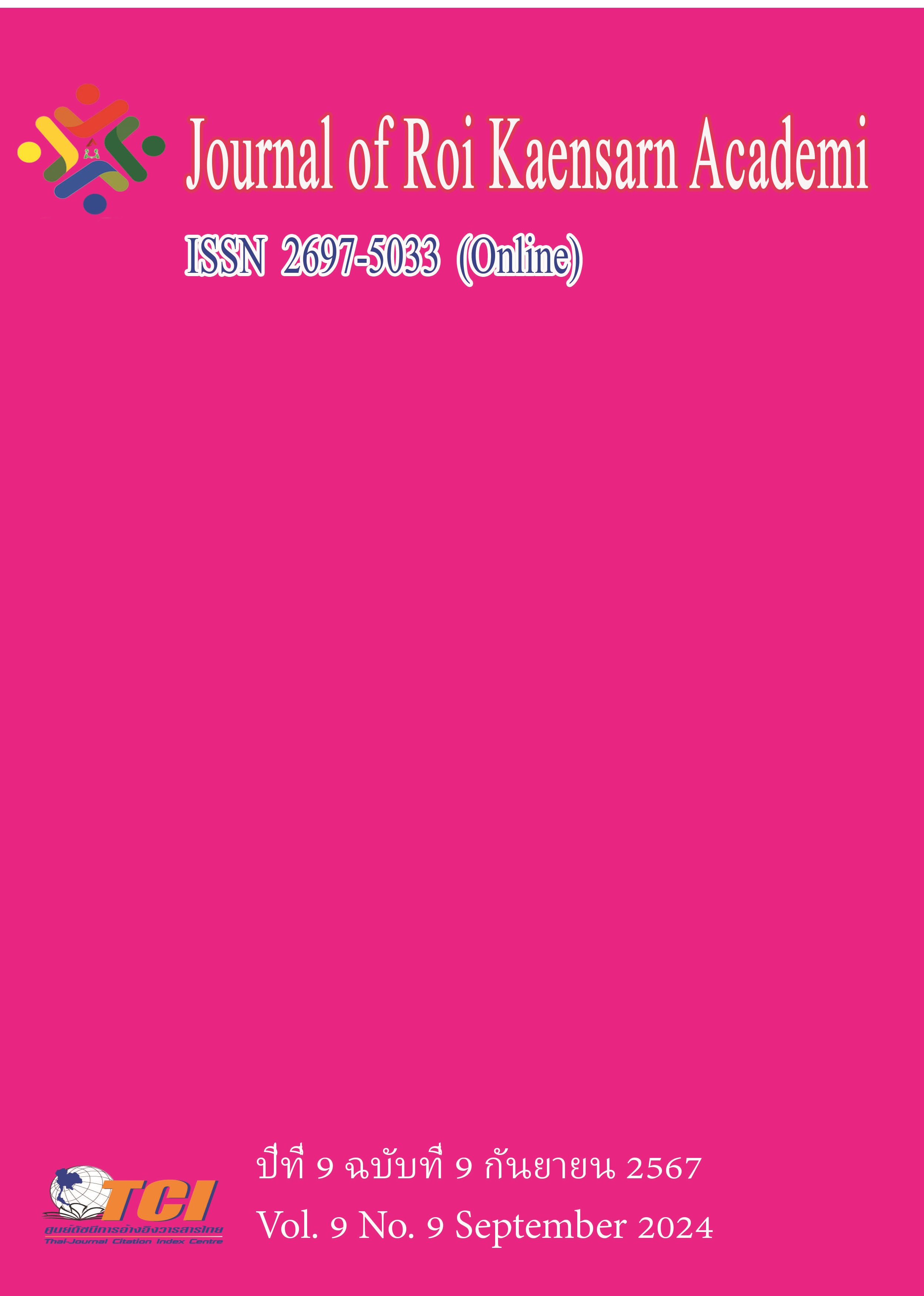The Human Resource Management Model of Digital Media Major in Public Universities Under Liaoning Province
Main Article Content
บทคัดย่อ
The objectives of this research were: (1) To examine the components and indicators of human resource management of digital media major in public universities under Liaoning Province; (2) To propose the model of human resource management of digital media major in public universities under Liaoning Province; and (3) To propose guidelines for implementation the human resource management model of digital media major in public universities under Liaoning Province.
The research was a mixed methodology research. The population is consisted of administrators and teachers of digital media major in universities in Liaoning province, total 1,350 people. The sample was 294 administrators and instructors. The researcher determined sample size with G*Power, and obtained by the stratified random sampling technique. The 7 key informants were mainly presidents, deans, head of department and discipline leaders of public universities with digital media major in Liaoning Province, and were obtained by purposive sampling method. The instruments used for data collection were semi-structured interview form, five-point rating scale questionnaires and Focus Group Discussion form. The response rate of questionnaires was 100%. Statistics used for data analysis included frequency, percentage, mean, Standard Deviation, Confirmatory Factor Analysis (CFA), and content analysis was employed.
The research findings were: (1) There were five components and 25 key indicators of human resource management of digital media major in public universities under Liaoning Province, which consisted of Incentive Mechanism, Performance Management, Team Building, Development Training and Resource Environment; (2) Model validation of five components were founded and model fit with empirical data for all indicators. And (3) There were total 19 guidelines of human resource management model of digital media major in public universities under Liaoning Province.
Article Details
เอกสารอ้างอิง
Bai Hongyi, & Zhang Zhian. (2010). Balanced speed and depth "diamond model"—News production strategy in the era of mobile Internet. Journalism Practice, 6, 29-31.
Bai Hongyi, & Zhang Zhian. (2010). Balanced speed and depth "diamond model"—News production strategy in the era of mobile Internet. Journalism Practice, 6, 29-31.
Bie Ronghai. (2011). Reshaping the relationship between government and universities in the transformation of higher education. Chinese Public Administration, 28 (9), 33-36.
Cao Nana. (2022). Thinking about improving the efficiency of university human resources management. Science and Technology Information, 2022, 20 (03), 117-119. doi:10. 16661/j.cnki.1672-3791.2111-5042-8162.
Chen Chunping, & Long Jingyun. (2004). Ethical analysis of human resources management in higher education. Yunmeng Journal, 2004, 25 (2), 35-38.
Cui Hu. (2003). Discussion on strategies for cost management of human resources in higher education. Economic Adviser, 2003 (2), 102-103.
Duan Genliang. (2003). On the incentive issues in human resources management in higher education. Journal of Northwest University (Philosophy and Social Sciences Edition), 2003, 33 (1), 148-151.
Fan Sijie. (2023). Realistic dilemmas and countermeasures in university human resources management. Talent Resources Development, 22, 46-48. doi:10.19424/j.cnki.41-1372 /d.2023.22.018.
Gong Xiangming. (2001). On the development of human resources in universities under the conditions of knowledge economy. Journal of Hunan Educational Institute, 19, 82-83.
Gu Kai. (2021). Exploration of innovation in university human resources management work. Office Business, 2021 (08), 166-167.
Gu Mingyuan. (1990). Encyclopedia of Education. Shanghai: Shanghai Education Press.
Huang Mingfen. (2009). New Media and Western Digital Art Theory. Xuelin Publishing House.
Li Mengxiang. (2020). Discussion on the construction of performance management system for university human resources. Talent, 2020 (01), 131.
Li Youyi, Zhao Shuming, & Liu Hong. (2001). A review of research on human resources management. Journal of Nanjing University (Philosophy, Humanities and Social Sciences), 38 (4), 128-139.
Liang Chunsong. (2018). Innovation experience of university human resources development and management. Shanxi Agriculture and Economics, 2018 (04), 98-99. doi:10. 16675/j.cnki.cn14-1065/f.2018.04.064.
Lv Lijing. (2015). Research on faculty team construction under low organizational commitment in private colleges and universities. Zhengzhou: Henan University of Technology.
Song Jiajin. (1998). Analysis of human resources management issues in university science and technology. Scientific Management Research, 16 (6), 49-52.
Sun Huo. (2005). On the concept of administering the school according to law with a people-oriented approach. Jinan Journal (Philosophy and Social Sciences Edition), 2005 (3), 35-38.
Sun Yongqing. (2021). Research on the relevance of the Internet to university human resources management. Journal of Shandong University of Business and Technology, 2021, 35 (03), 117-124.
Wang Xichun. (2002). Continuous and effective incentive mechanisms are the guarantee of the construction of university teacher teams. Journal of Dalian Nationalities University, 2, 24-26.
Wang Yugang, & Wei Qiu. (2002). A brief analysis of the connotation and characteristics of human resources and management. Northern Economy and Trade, 6, 115-116.
Wu Mei. (2011). Quality assurance of higher education in Hong Kong under the background of scale expansion. Journal of South China Normal University, 36 (4), 144-148.
Zhang Jianxiang. (2002). On the transformation from personnel management to human resources management in universities. Journal of Lanzhou University (Social Sciences Edition), 30 (2), 162-165.

